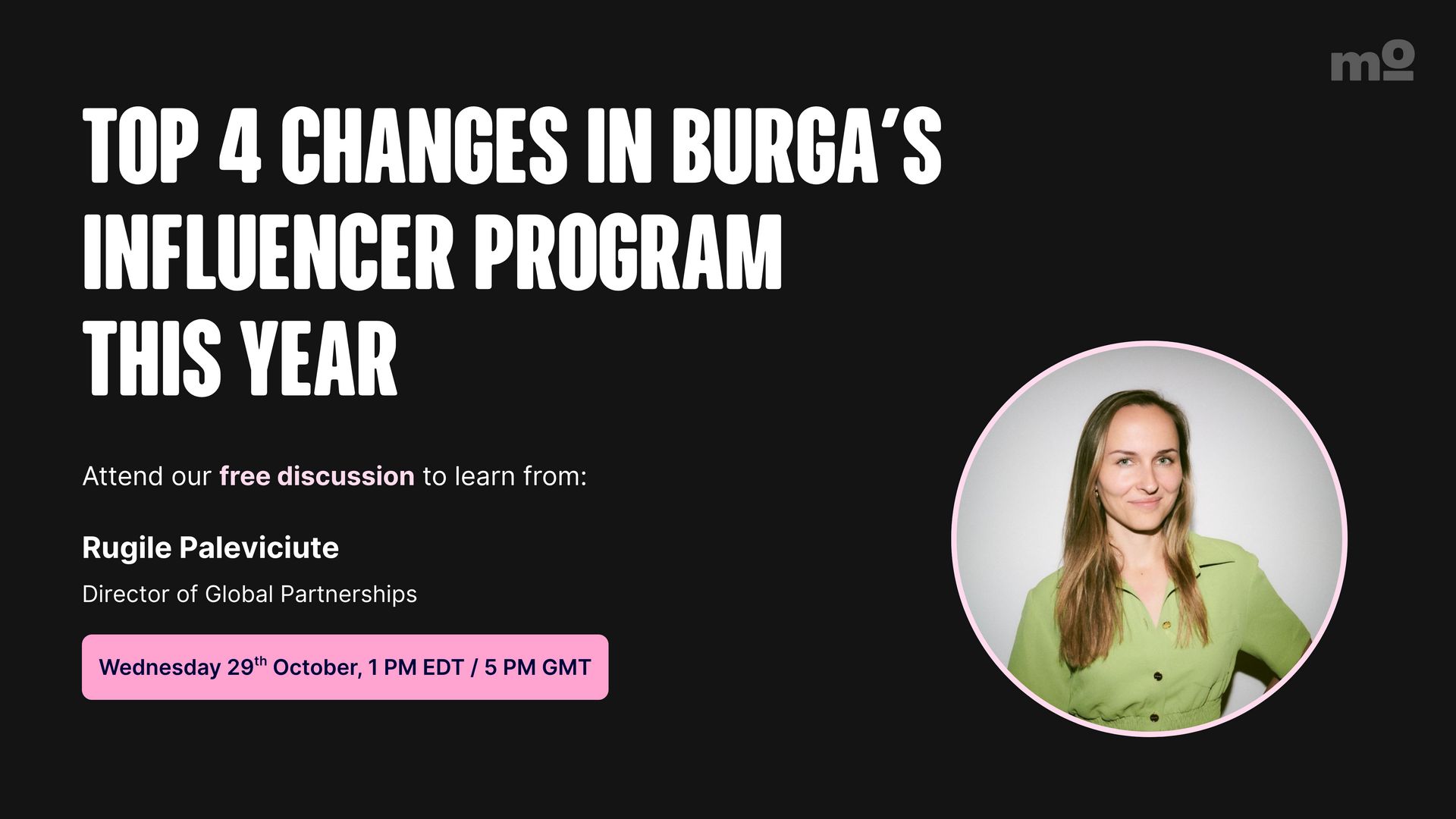- Return on Influence
- Posts
- How people actually buy (and what that means for creator discovery)
How people actually buy (and what that means for creator discovery)
How to think about discovery when 95% of people aren’t in-market.
Welcome to Return on Influence #62! The weekly newsletter where I, Eleni Zoe from Modash, share tactics and ideas to strengthen your influencer campaigns and improve ROI.
New here? Subscribe in one click with this magic link
Before I jump into this week’s issue, some housekeeping.
In a few hours, we’re running a Modash webinar that I’m so excited about I almost bought a new notebook just for the occasion.
This year, accessories behemoth BURGA did something unexpected. They broke up with discount codes.
Rugilė Paleviciute, Director of Global Partnerships, will share why they made that decision and how they moved their strategy to be more balanced.
I’ll be there, as usual, taking notes - in a notebook I already own.
See you in the chat box!
Now onto the stuff you came for.
Yesterday, I went in for a manicure. You know the drill: my nails were filed, shaped, buffed while I punished myself by studying a bajillion color options, only to decide I’d leave them bare to let my nails “breathe”.
This isn’t Facebook circa 2008, Eleni. Why are you telling us this? I hear you say.
Oh ye, of little faith.
This delightful anecdote is going to do some heavy lifting. It’ll explain how people buy things. I’ll weave it in and out to show you another way to choose creators that will dramatically open up the pool you can work with.
Concept #1: The 95-5% Rule
If you’ve been around marketing frameworks for a while, you might’ve heard about the 95–5% rule from the Ehrenberg-Bass Institute. It’s a rough way to describe how markets move.
At any given time, only 5% of people are actively buying in your category. The other 95%? They’re not. They’re busy thinking about their own messy lives.
Right now, I’m part of that 95%. I just got my manicure. No matter how many salon ads I see, I’m not booking another appointment. You can dangle discount codes in front of my face all you want, and I won’t bite.
At most, I’ll make a mental note: “Oh, that’s a salon I could try next time if my regular place is full.” I might even follow them on Instagram. But until my nails start looking rough again – or I get invited to an event – I’m not in the market.
That’s the reality for most consumers most of the time.
Concept #2: Category Entry Points
So, what happens when someone moves from the 95% to the 5%?
Something changes. A need appears. A situation arises that makes the product relevant again.
These moments are referred to as Category Entry Points. The idea comes from Jenni Romaniuk’s work at the Ehrenberg-Bass Institute.
Category Entry Points (or CEPs) are the mental cues that put a brand into someone’s consideration set. They’re the moments, thoughts, or needs that make a person think, “I could use that right now.”

For me, it’s when my nails reach a length I can’t stand. Or when I have a reason to look a little more put together. That’s when I start thinking about booking my next appointment.
Why does this matter for marketing? Because it tells us what kind of associations we should be building in people’s minds.
A sponsored post can’t force me to book an appointment today. But it can make me remember a brand tomorrow when I’m back in a buying situation.
Concept #3: Storyfit
And that’s where Storyfit comes in.
After seeing so many Modash customers struggle to find new creators because they were stuck searching in their product category, we needed a way to help them think differently. “Think outside the box” sounds nice, but it’s not actionable.
Storyfit is.
Here’s how it works:
Decide which buying situations you want your brand to be associated with.
Find influencers who can authentically show those situations in their content.
If I were managing marketing for the hypothetical salon “Nailed It,” instead of only searching for beauty influencers, I might look for creators sharing content related to dating.
Because if an influencer says, “I’ve got a date tonight, come with me to get a manicure,” that association is more likely to stick in my memory.
Next time I have a date, that’s the salon that comes to mind.
Storyfit helps you build those associations on purpose. It turns your discovery process from “who fits our category” into “who can tell our buying stories.” And that widens your pool of potential partners considerably.
Be honest – did this change how you think about discovery? Hit reply and let me know what clicked for you.
Extra Credit
A few more things worth your time:
The yearly ROI survey is still open. It takes 2 minutes, and you’ll be helping me so much.
How influencer search is changing. No dramatic drum rolls, just cool info.
7 search mistakes you’re making that are holding you back. And a few ways to fix them.
📌A NOTE ABOUT WHAT YOU JUST READ
The tips in this newsletter might not be right for your specific case. Use good judgment when deciding whether to take advice from the internet—even mine. My team and I survey & interview influencer marketers whose advice and observations come from their direct experience. ROI is designed to help you connect the dots and be inspired or challenged to think about your influencer marketing in a new way.
